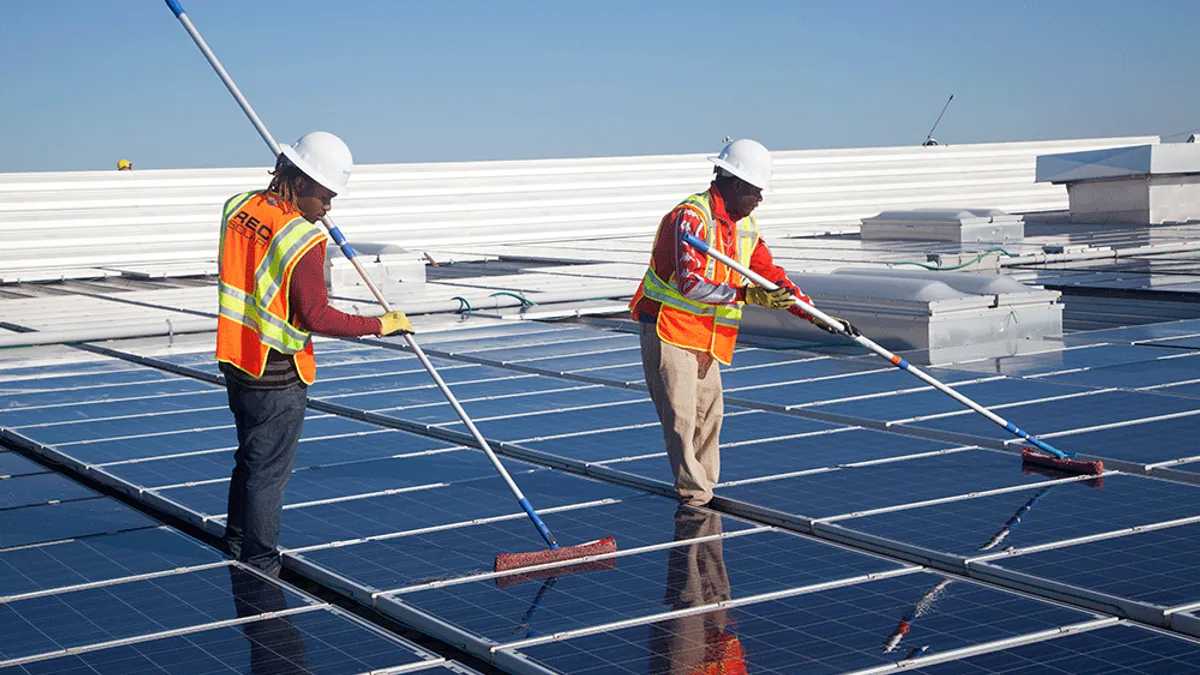Dive Brief:
- Both MidAmerican Energy and Alliant Energy appear to be preparing new solar fee proposals, judging by presentations they have made to Iowa state regulators as part of an investigation into alternative rate designs, Midwest Energy News reports.
- Alliant told the Iowa Utilities Board that payments for net metered alternative energy production was its highest cost resource by far, and that rates need to reflect the cost of service.
- MidAmerican told regulators that while distributed generation remains relatively small on its system, "now is the time to address price structure issues," before the pace of growth picks up.
Dive Insight:
In what could shape up to be a familiar fight, Iowa utilities appear to be making the case for new fees on distributed solar customers, setting off alarm bells with advocates who want any changes to be considered in a full rate case.
Last year, the IUB determined there was no need for immediate changes to the state's distributed generation policy, but issued an order continuing investigation and encouraging utilities to propose pilots. While that may have been a temporary victory for solar advocates, there is also concern the process could be used to later rates without complete review.
“We're concerned that Alliant and MidAmerican are trying to force the parties into a confrontation around very dramatic rate-design changes, and singling out solar customers in particular to bear the brunt of these new rates they want to charge,” Brad Klein, an attorney with the Environmental Law & Policy Center, told Midwest Energy News. “We feel it is not appropriate and is not called for by any data that has been collected. ... I can't imagine characterizing (a rate hike for solar customers) as a pilot. That certainly wasn't what the board meant."
Alliant, in a presentation to the IUB, told regulators that residential and gneral service rates are currently designed to cover most costs through the volumetric charge. "DG customers still need to be connected to the power system, but net metering allows bypassing of system costs (e.g. transmission and distribution, customer-related and energy efficiency costs)," the utility said. "Those system costs are shifted to non-DG customers."
MidAmerican had less than 300 net metered customers at the end of last year, out of a total 667,000 accounts.
"Distributed generation customers are currently a small percentage of total customers," the utiility said, adding "growth is happening but not at a significant pace. ... Now is the time to address price structure issues."
"Efficient pricing should match each service provided by the utility to the price for providing that service," MidAmerican told regulators. "Grid related services (transmission and distribution functions which are demand related per cost of service) should be recovered through demand charges. ... Energy services (generation service) should be recovered through volumetric charges."














